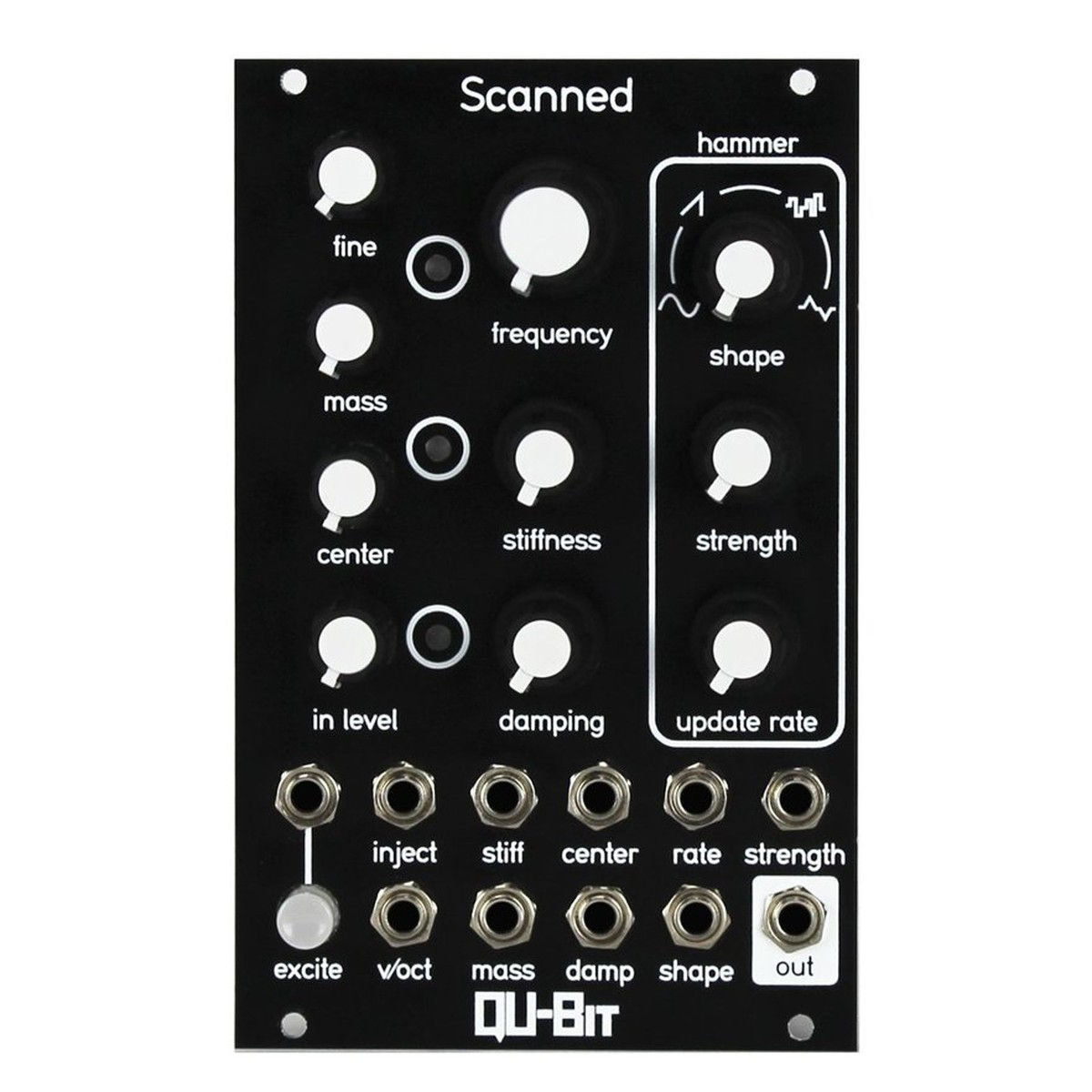QU-BIT ELECTRONIX SCANNED
Scanned synthesis is a musical technique resembling a strange cross between wavetable oscillation and physical modeling, using wavetable techniques to "scan" arrays of physically modeled bodies in motion. Developed originally by Bill Verplank, Robert Shaw, and computer music pioneer Max Mathews in the late 1990s, scanned synthesis is a relatively new technique—and until now, a relatively unknown one. As its name attests, Qu-Bit's Scanned mobilizes the this technique to generate singular timbres and pitches previously unavailable in the Eurorack paradigm, and the hardware world altogether. Its interface is ergonomically configured to assist users with quick and dirty wavetable generation for practical on-the-fly programming.
Using physical modeling to emulate exciters and resonating suspended bodies with controllable mass, center, stiffness, and damping, Scanned generates dynamically changing wavetables that alter in shape until they ultimately rest. A world of unheard timbres awaits, from clanging metallic textures to growly drones, inharmonic percussion, and far more. Scanned has to be heard to be believed.
SCANNED FEATURES
- First implementation of scanned synthesis in hardware
- Generates wavetables on-the-fly
- Wavetables change dynamically based on abstracted physical modeling processes
- Can operate as a free-running oscillator or "excited" voice
- Inject input allows for excitation of modeled string via external audio or CV
- Multiple hammer shapes for a variety of internal excitations
- Can create complex evolving sounds with little or no external modulation

